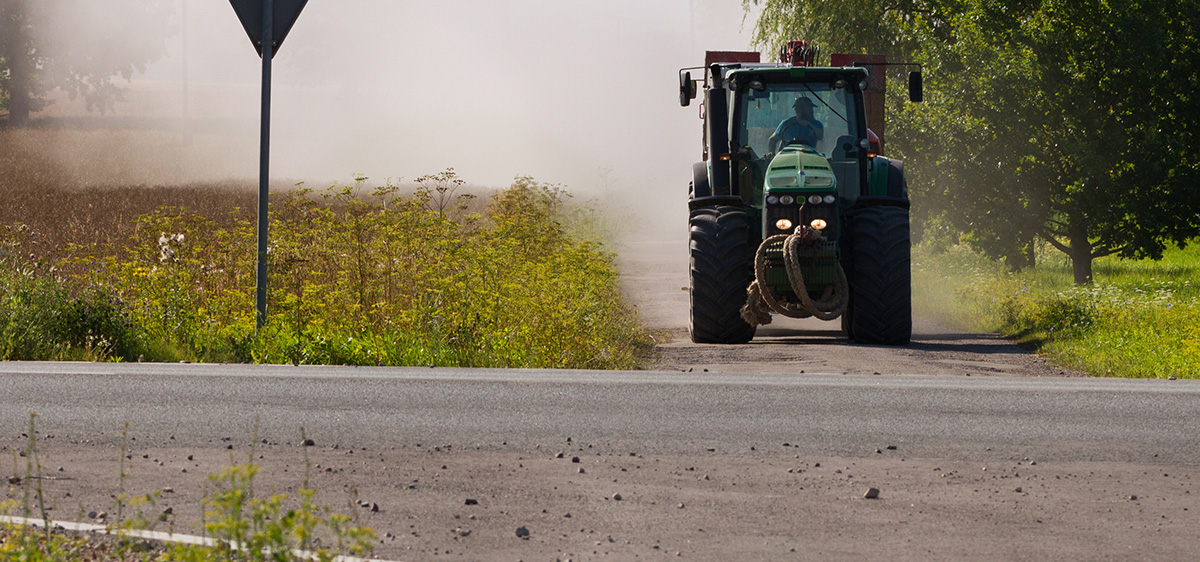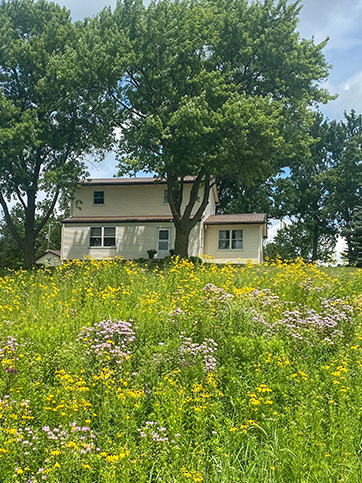Understanding and Responding to Landowner Concerns
Table of Contents

Roadside managers enjoy a harmonious relationship with most landowners who live near roadsides they manage. However, some landowners will be critical of the IRVM approach. Some fear an increase in weed encroachment from the roadside, while others object to the appearance of native vegetation in the roadside. They may contact the roadside manager to voice their complaints. It is important to ask clarifying questions to understand their concerns before responding. The following scenarios and suggested clarifying questions are based on roadside manager feedback during a presentation about communication at the 2023 Roadside Conference.
Scenario 1

A landowner who moved from a city setting to a rural setting is unsatisfied with the unclean appearance of roadside plants and brush.
Suggested clarifying questions:
- What brought you from the city to the county?
- How would you define “unclean appearance?” What specifically is unappealing to you about the roadside?
- What would you like to know about how the roadsides are managed?
This information can be used to tailor a response to address the landowner’s specific concerns:
- Talk about the vegetation, explain what species are there, and help them make a connection between specific plants and the need for them to grow in a more natural manner, which may change the person’s mind about how the roadsides look.
- Enhancing roadsides is an investment in Iowa’s native habitat and wildlife that also keeps our roadsides safe.
Scenario 2
A landowner is concerned about roadside weeds encroaching on their property.
Suggested clarifying questions:
- Which weeds are causing you problems?
- What specific weed pressure (the visual percentage of how much volume weeds are occupying in a given agricultural area) issues do you have?
- What practices are you using to control weed pressure on your property?
This information can be used to tailor a response to address the landowner’s specific concerns:
- I would like to come take a look at the problem, assess the area, and come up with a solution for both you and the county.
- Native long-lived plants in roadsides suppress the kinds of weeds that tend to cause problems in crop fields.
- Explain the source of the weeds, whether it is from a neighboring property or from the roadside. If it is from the roadside, explain how you will remedy the situation.
Preventing Mowing and Spraying of Plantings
Sometimes, even after you have spent years maintaining a planting or remnant, the adjacent landowner may mow or intentionally spray it with herbicides, violating Iowa Codes 317.11 and 317.13. If this happens routinely with the same landowner, you may want to pursue monetary redress with the county or city attorney. However, if you are proactive with your communication strategy, you may be able to avoid having to take such action.
Some roadside managers have taken the preventative step of talking to landowners or placing doorknob hangers on their doors. In the form of a letter or brochure, roadside managers can explain why they are planting and maintaining native plants in the roadside, why the need for mowing and herbicide use is greatly reduced with such vegetation, and provide contact information. Subsequently, you could provide an annual one-page handout with text and photos updating landowners on progress made over the last year, any “by-the-numbers” facts (e.g., acres planted/maintained and cost-savings estimates), and any other news from the past year (e.g., new equipment purchase, new signage, grant funding secured). Make sure to include your name and a head-and-shoulders photo of yourself to make the communication more personal.
Establishing relationships and maintaining them is crucial to preventing adjacent landowners from mowing and spraying in the roadsides. This cannot happen without communication that shows respect for landowners and an understanding of the legitimate stake they have in how the roadsides are managed. Human nature indicates the landowners will treat you with reciprocal respect and deference to your area of expertise.


